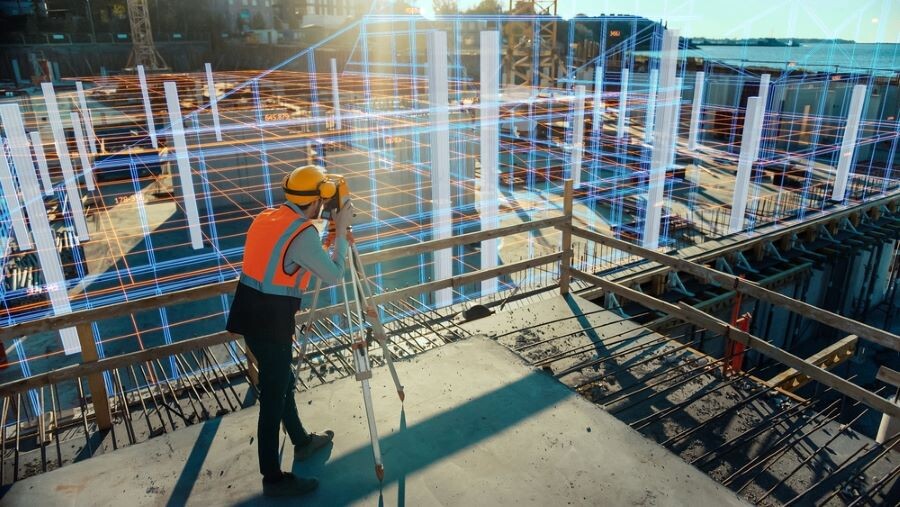We’re all plenty familiar with the reputation of the construction industry with regards to its attitudes towards technology and adoption of new tools. For years, it has been known as a space filled with personnel resistant to change, leading to inefficient workflows and projects too often going over budget and/or falling behind schedule. Although there is still some truth to this, it’s more true to say that most in the industry are simply sick of hearing it, and will say that it’s an unfair stereotype. Looking around the landscape, you can see why, as more technology is being developed than ever and demand clearly exists for these tools.
And so while the industry, one of the largest on the planet, may still not be where many would like it to be in terms of adoption technology, it’s moving closer to that point with each passing year. Procore is one of the companies with the best view of this growth as a provider of construction management platforms, working first-hand with both those in the industry and those making tools for the industry. They’re already starting to look towards the year ahead of what can be expected in construction in 2024, finding trends to watch by speaking with current and prospective customers.
To learn more about what they’re expecting, Geo Week News recently spoke with Sasha Reed, Senior Director of Industry Transformation with Procore.
Increasing adoption of established technology
In thinking about an industry that is supposed to be up-and-coming with technological adoption, one would probably think that means utilizing new tools. There’s certainly some of this in all areas – like autonomous heavy machinery in coming years, and more powerful software platforms – but one of the main themes of our conversation with Reed involved greater adoption in tools that have been around for decades.
That includes, for example, Internet of Things (IoT) sensors. While she acknowledges that these sensors have been around and utilized for at least a decade at this point, they’ve largely been leveraged by building owners and operators. She says now, they’re starting to see more usage on the construction site, in part because firms are becoming more savvy combined with better WiFi being available in the field, as ways to capture more crucial information.
“I think this is something really critical for construction to go from digitization to digitalization,” Reed said. “Digitization is just, I was using a clipboard and paper, and now I’m using an iPad in the form fill. That’s digitization - we’ve taken paper and gone digital. The digitalization is the actual transformation of the business processes.”
A lot of this comes back to that idea of owners becoming more savvy, which includes the building and asset owners. In talking with people throughout the industry this year, we’ve seen an attitude that owners are finally more willing to adopt technology in construction processes, and in fact often push for it now. Reed believes this has been a trend over the last five to 10 years, and can be traced back to the number of data centers which were being built in the last decade.

“The last eight to 10 years, a lot of our customers were diversifying their business, which included a portfolio of data centers. That was driven by a lot of these technology companies. So, over the last 10 years, construction has had a much more technology-savvy owner involved in driving the projects they’re involved in.”
She believes this has brought a different perspective to the industry, which has rubbed off on everyone over the years. And it’s helped lead to another established technology – reality capture – becoming adopted more often. Reed told Geo Week News that she believes reality capture in construction will become “table stakes,” in large part because so many construction projects today are retrofits. Those projects, of course, require a highly accurate understanding of current conditions. She said at Procore, they’ve seen consolidation in the reality capture space, “which tells us that the technology is starting to mature.”
Using AI to capture knowledge
While some of what Procore sees coming in 2024 involves adoption of established technology, there are certainly still new tools which can help the space, and like every other industry it starts with artificial intelligence. AI is everywhere right now, but every person and industry has their own relationship with the technology. For construction’s space, Reed said her conversations on the subject largely revolve around how exactly it can be used.
When asked what the most common responses and talking points she hears in conversations around AI, she relayed, “What is it, and how is it going to help me? To be honest, that’s the most consistent [response]. You’ll have people on a spectrum of awareness of what it is and how they use it, but What is it, and how do I use it? Is probably the most common question.”
Of course, AI is so wide ranging that there are many different ways to answer that question of, How do I use it? Reed relayed one way, though, that sounds particularly promising for this specific industry. That is using generative AI, the kinds of large language models which have been capturing so much attention in both industrial and consumer spaces, to capture knowledge of an aging workforce to ensure we don’t lose it. She recalled one particular customer who had their own internal LLM, which could spit out information regarding any process or procedure in the company. This, she said, sparked an idea.
“In that moment, they had a big eureka moment,” Reed said. “We’re facing a brain drain. We’re facing a generation that has such applicable knowledge of how things fit together – people, materials, contracts, all of that. But we think we’re about to lose all of that information. What if we were able to use AI to capture as much of that information as possible?”

Focusing in on the things that matter
Construction is like every other business in that it requires profits to keep going, and the financial side of the equation ultimately drives everything else. It’s how every entity needs to run, otherwise there would be no work to continue. That said, it’s becoming clear that the industry has a massive impact on the rest of the world, and there are fewer excuses to ignore that, starting with the industry’s carbon footprint.
Reed sees that becoming even more of a focus in the coming year, largely because we’re more aware than ever of what exactly that impact looks like.
“We now have data that shows us and tells us [how much construction contributes to the overall emission of greenhouse gasses. I think we’ve always recognized in this industry the level of rework that goes into projects, but the cost of that rework was never really quantified.”\That cost comes in different forms, including financial and environmental. Reed also emphasized the human cost, though, in terms of mental health. “I don’t think we’ve ever really calculated the mental cost that goes for individuals that do the hard, physical labor of getting something installed, and then the next day having somebody say, Oh, the designer made a change, or, the owner made a change. We have to tear that out.”
Reed believes that, along with more of a focus on carbon footprints, that the construction industry will – and really must – wrestle with the mental health crisis in the industry. She says that over the last three years, construction has “shot to the highest rate of male suicide in any industry.” She continued, “It gives us a crisis point to have some more in-depth conversations.”
This is a serious issue, and one which Procore is working to rectify to the greatest extent possible, as quickly as possible. The company recently partnered with Fred Mills, founder of The B1M YouTube channel, for a campaign called Get Construction Talking, which you can learn about here.
If there’s one trend everyone would like to see really take hold in the coming year, beyond all of the exciting new technology, it’s more resources being dedicated towards, and awareness being built around, the growing mental health crisis around the construction industry.






